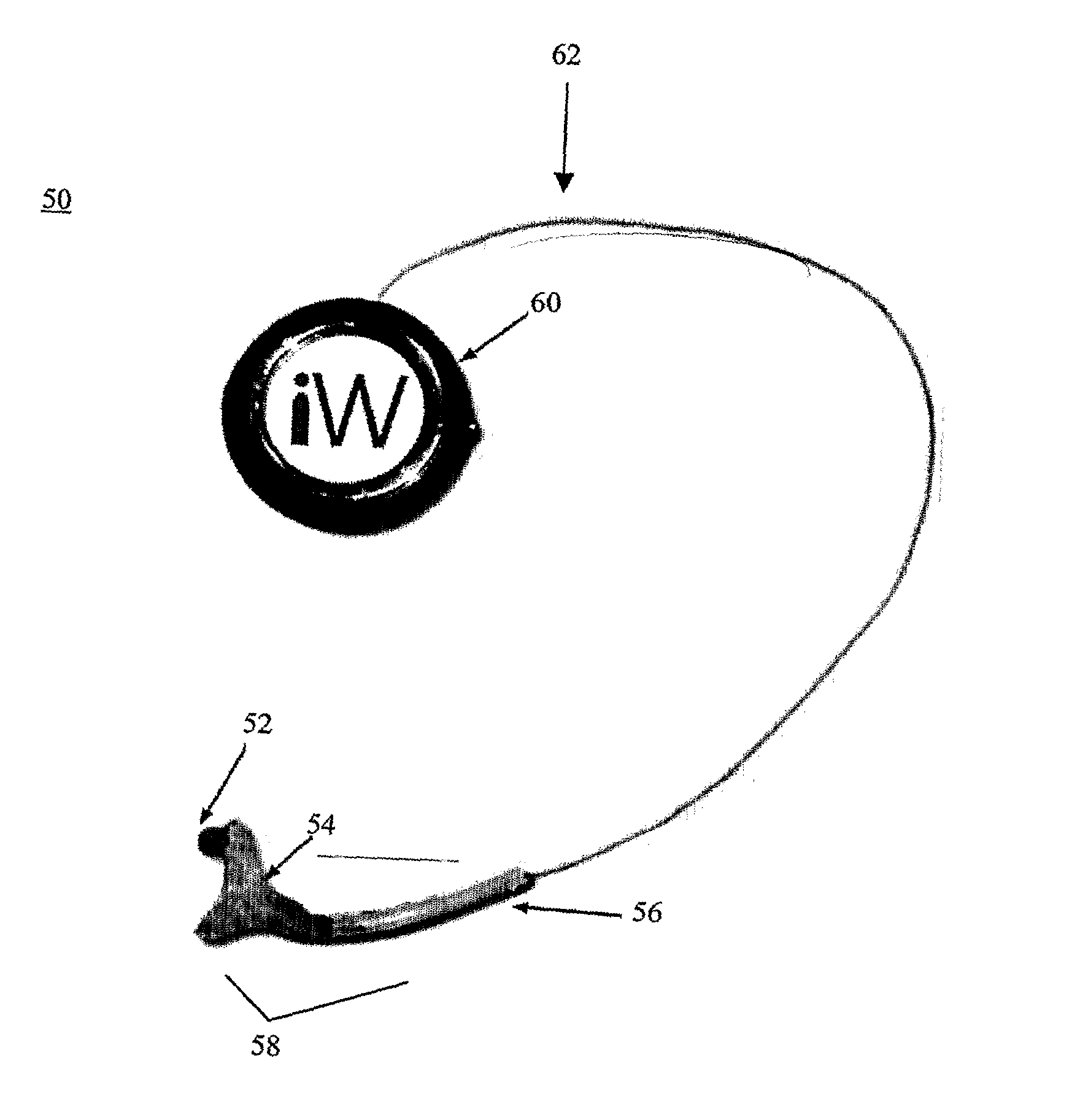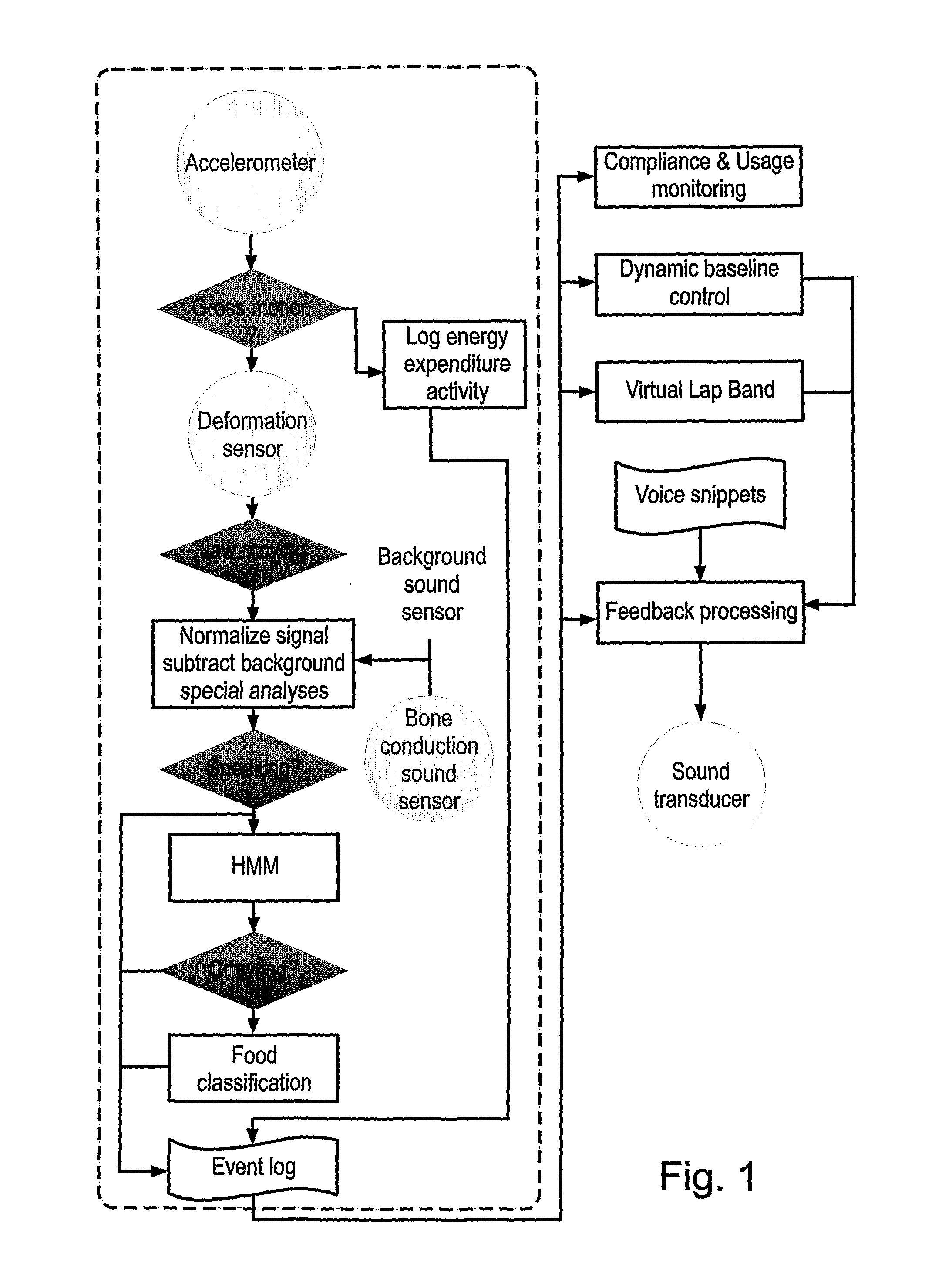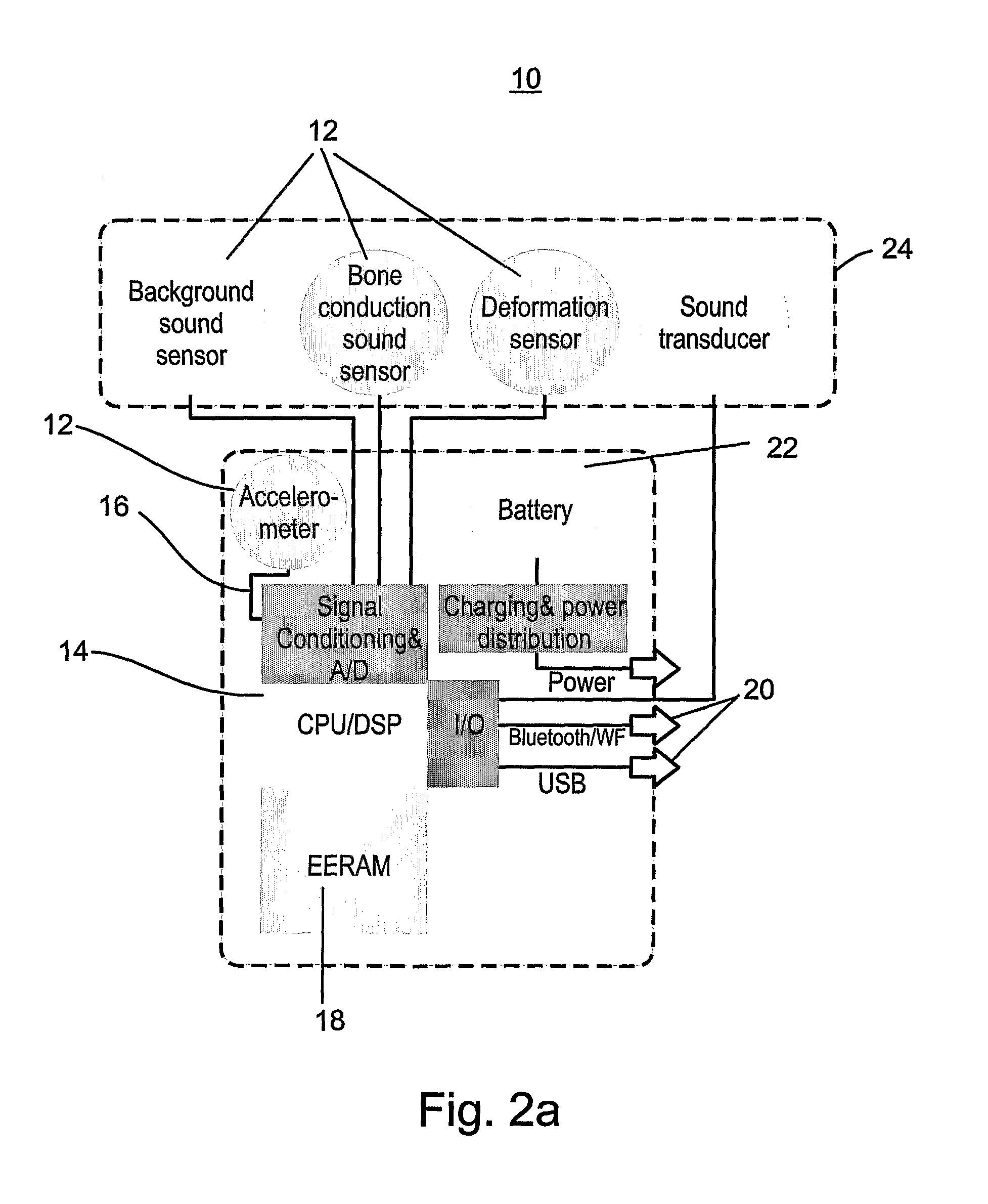Device for monitoring and modifying eating behavior
a technology for eating behavior and devices, applied in the direction of instruments, data acquisition and logging, force/torque/work measurement devices, etc., can solve the problems of affecting the effectiveness of eating behavior modification, and each of the approaches described above suffers from inherent limitations,
- Summary
- Abstract
- Description
- Claims
- Application Information
AI Technical Summary
Problems solved by technology
Method used
Image
Examples
example 1
Device Mounting Considerations and Experience
[0119]Since gravity can be a factor in device operability the microphone should press against the skull slightly above where the skull connects to the helix of the ear (See FIG. 3). The top of the ear at the 11 o'clock position (12 o'clock is at the top of FIG. 3) is most likely the optimal location since the device is most stable at that location, the jaw muscles are still pronounced enough and there is motion, the wedge formed by the helix and skull naturally keeps the microphone in contact with the skull and gravity will help fix the device in this location (bottom spring arm helps). This positioning should take into account eyeglasses which might interfere with placement and that jaw muscles are not as pronounced as they are right under the ear.
[0120]The top image of FIG. 4 illustrates insertion of the Temporalis muscle into the skull bone. The lower image of this Figure illustrates an ear superimposed on top of the skull and highligh...
example 2
Monitoring of Daily Eating Times in Human Subjects Using the Device of the Present Invention with Feedback
[0122]A long-term study of the device was conducted in the field by tracking a 21 year old male subject (weight 214 lbs, height 70 in, BMI-30,8) for 22 weeks.
[0123]The goal of the study was to observe the relationship between eating duration and weight. The subject was instructed to wear iWhisper for every meal. A simple weight loss program that required him to limit his eating duration on a daily basis was implemented. The device presented the eating duration information in two ways: (1) on the PDA screen using various daily statistics, and (2) using simple spoken feedback “You are approaching 200 seconds.”. The subject was instructed not to exceed a target daily eating duration. The hypothesis was that continuous real-time feedback would help the subject plan and control food intake. The initial target duration was set at 1000 seconds based on the average first week of usage a...
example 3
Sound Processing
[0126]FIG. 7 illustrates sound processing as conducted by the present device. An array of sensors including a bone-conduction microphone, and air microphone located near the bone-conduction microphone and an accelerometer mounted on the ear send analog signals to analog-to-digital converters. Unlike a conventional air microphone, the bone conduction microphone only captures the sounds transmitted through the bones and muscles, rejecting ambient noise, providing a very desirable signal-to-ambient-noise ratio [Zhang 2004 Proc. International Conference on Acoustics, Speech, and Signal Processing, Montreal, Canada, 2004]. The ear canal provides good access to sounds originated in the mouth and to subsonic signals generated by the movement of the jaw. The sensor is a miniature electret microphone with an integrated amplifier (Sonion 9723 GX) which is typically used in hearing instruments. A comfortable earpiece that holds the microphone inside the ear canal without obstru...
PUM
 Login to View More
Login to View More Abstract
Description
Claims
Application Information
 Login to View More
Login to View More - R&D
- Intellectual Property
- Life Sciences
- Materials
- Tech Scout
- Unparalleled Data Quality
- Higher Quality Content
- 60% Fewer Hallucinations
Browse by: Latest US Patents, China's latest patents, Technical Efficacy Thesaurus, Application Domain, Technology Topic, Popular Technical Reports.
© 2025 PatSnap. All rights reserved.Legal|Privacy policy|Modern Slavery Act Transparency Statement|Sitemap|About US| Contact US: help@patsnap.com



